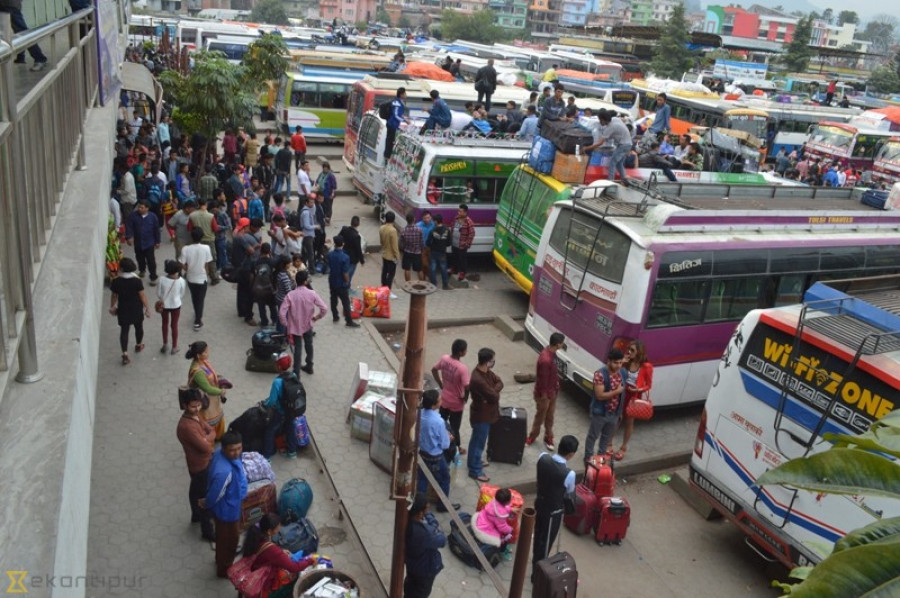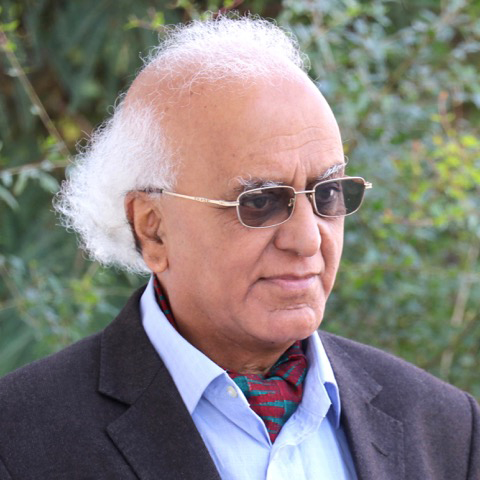Columns
Theorising Dashain exodus
Swathes of people leaving the Kathmandu Valley reminds us of its magnetic power to attract people.
Abhi Subedi
A large albeit temporary exodus of the people of the valley during the Dashain festival in the first and second week of October 2019 is nothing but a grand repetition of what happens each year. It triggers discussions about the management of vehicles for passengers going home. Over two million people leaving the valley to go home to celebrate the Dashain festival definitely affects the daily programmes of the Hindus and non-Hindus alike because the state gives the longest holiday during this time, and a sense of festivity and carnival grips the mood of the country. Dashain gives an excuse to postpone even important happenings. Even when the country was going through a difficult period triggered by the insurgency from 1996-2006, Dashain was sometimes used for a lull in the battle, and even to facilitate efforts to broker peace agreements.
After the political change of 2006, non-Hindus and ethnic groups who have their own festivals or chaads questioned why they should observe Dashain, which is promoted by the proactive Hindu groups and a state dominated by them. But the debates created broader awareness about the festivals of the indigenous people of the country and their cultural significance. Various New Years celebrated in this country bring joy, colours, music and dance. That means the country comes out in a colourful celebratory mood several times round the year. Additionally, the debate triggered the question of the politics of culture and knowledge.
But what is intriguing and what remains ignored is the scale of the exodus that happens every year. I get surprised and even baffled to hear the great number of people leaving the valley annually. Media report incidents related to the bad road conditions. To see the visuals of buses carrying people going home to celebrate Dashain stuck in the hills of mud and blocked by boulders fallen with the mudslide is very disturbing. Young people pulling motorcycles out of the mud and old people and children waiting in the drizzle for some miracle to happen to the vehicles that would take them home are moving visuals. Some even die during this ordeal. But the most interesting part of the whole thing is that it happens.
Despite the bus services that charge exorbitantly high rates for tickets ignoring the government's familiar bravados to punish them, the bad road conditions, bad bus services and the distances that they have to cover under such precarious conditions, people finally make it. The miracle is, over two million people leave the valley to go home. Yes, this happens! What also happens is that these melees of people who scramble the bus parks suddenly clear out. It is difficult to know whether those groups of people who do not celebrate Dashain too get embroiled in this festive conundrum or not.
But to theorise this temporary exodus of people out of the Kathmandu valley we should turn to a few very important and ignored characters of the Nepal valley, or to use the more historically and culturally charged expression, the Nepal Mandala. This temporary exodus reminds us of the character of the Kathmandu valley, its location and its magnetic power to attract people, and the grand non-attachment of the people who leave the Mandala during Dashain, with the great well-formed Dashain festivals of the valley of the Newars, some of which have roots going back to the Licchavi times. The explanation of this practice is very simple—people going out of Kathmandu at this time for Dashain are the visitors for whatever reasons or length of time that may be. They have constructed homes in the valley, but they do not feel that they have any cultural base here. They treat themselves psychologically as people from moffusil, a term that was used commonly during the British Raj in India to characterise the relation of 'Calcutta' with the provinces outside it. People's relationship with this centre of culture, learning and power was defined as the relationship between centre and periphery, between metropolis and moffusil. 'Calcutta' had the luxury of a system created by the historicity associated with the British Raj of developing a sense of alterity vis-à-vis the moffusil, a privilege Delhi and other cities did not have. Delhi does not fit into the centre and periphery binary. It is a grand functioning chaos and a power centre that has the luxury to experiment with the different phases of history.
In the case of Kathmandu, alias 'Nepal', it created the alterity with a sense of the uncanny, of the oligarchic rulers to show that moffusil was a lower sphere that stood ruled by their masochistic might. People travelled for weeks to land in their capital for various purposes. So much so that the Nepali citizens of the Madhesh area had to take a visa to enter here.
When the people from moffusil came here they either saw the Rana buildings and palaces or the traditional beautiful Newar houses and architectonic sites neither of which belonged to them. So when things changed, people from outside came here, made money and built buildings with a sense of vengeance. The monstrosities that fill the capital are therefore not made with a sense of belonging, but with a sense of fulfilment. That is the reason why they do not have any character or any plans. That is the reason why their governments ‘give a damn’ to build the city nicely and construct well-planned streets. That is the reason why millions of them return to their spaces all over the country symbolically during Dashain. Several of them drive their cars on terrible roads to show off to their poor neighbours and relatives. One of my relatives exactly said so to me; I feel deeply shattered by that.
As shown by the erstwhile Maoists' march of three to four lakh people in Kathmandu in 2010, people from outside and parties see the symbolic effectiveness of making a presence here and returning to the moffusil. I regard the temporary Dashain exodus as a significant metaphor of both the lure of the powerful centre and the love for the moffusil. Changing the practice of alterity and the psychology of the centre and periphery is the only condition for the success of federalism in Nepal.
***
What do you think?
Dear reader, we’d like to hear from you. We regularly publish letters to the editor on contemporary issues or direct responses to something the Post has recently published. Please send your letters to [email protected] with "Letter to the Editor" in the subject line. Please include your name, location, and a contact address so one of our editors can reach out to you.




 15.12°C Kathmandu
15.12°C Kathmandu















